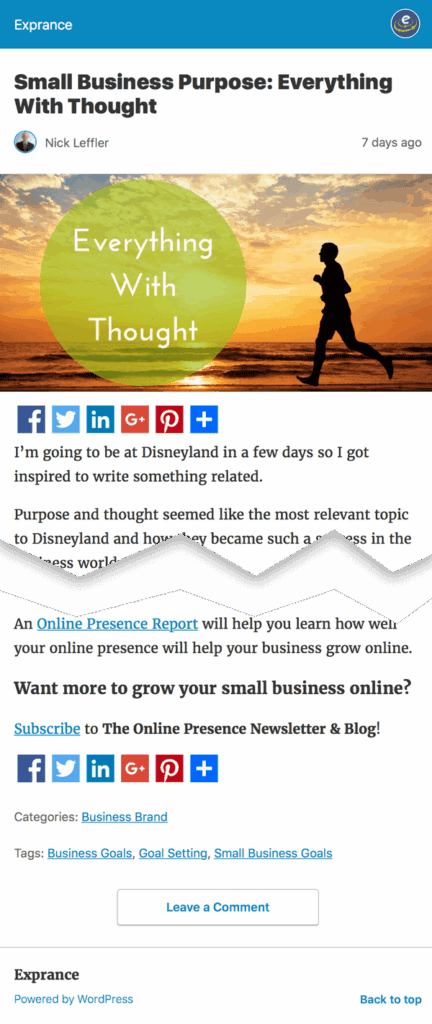People don’t “surf” the internet anymore.
Back in the late 90’s and early 2000’s it was a different story. It was the days of web rings and ad exchange networks.
People surfed websites and randomly bounced around the internet.
Now the internet is all about social media or video.
When visiting websites, people are goal oriented and they’re looking for something.
Not only are they looking for something but they’re probably looking from a mobile device.
That means two things for your small business if they find your website:
- They are looking at your website to achieve a goal.
- They’re probably on a mobile device.
That means you need to make it as easy as possible for visitors to find what they’re looking for and fast.
Search engine optimization (SEO) is heavily weighted towards these two factors:
- Your web pages need to all be goal oriented.
- Web pages need to load fast.
SEO isn’t about computers and the way you write. SEO is about people.
How Fast?
You know your website needs to be fast but what is fast?
Google looks at the speed of a website more now than ever.
How fast does the server take to respond and the entire page take to load?
So how fast does Google want your website to be in order to rank it as fast?
Traditionally there was a 3 second rule for web pages. Your website needs to load in 3 seconds or less to be considered fast.
That expectation from the Google point of view is generous. Google wants your website to be as fast as possible.
The point where up to 50% of visitors to your website won’t wait any longer for it to load is 3 seconds.
That means your website needs to be 2 seconds or less ideally.
We don’t live in an ideal world where every page can be less than 3 seconds though so what’s more realistic?
Balancing Act
There’s always a give and take in life. Yin and Yang.
Striking a balance between a fast business website and a useful business website is your goal.
If you get visitors to your website but can’t convert them into customers then no matter how fast your website is it does you no good.
How do you balance the two goals of site speed and meeting visitor goals?
By getting as close to a 3 second load time as you can while not compromising too much on visitor conversion.
Your ultimate goal is to convert a visitor to your website into either a lead or a customer.
Don’t compromise too much on converting visitors because that’s more important than a website people visit but don’t do anything with.
That may mean your home page doesn’t load quite as fast as you’d like but most other pages do.
It could also mean you have to scale back some of your calls to action.
Scale Back
In several places on this website I’ve simplified the calls to action to increase speed.
Each blog post has an AMP version which is specifically for mobile devices. The pages are basic and load fast but don’t have much in the way of formatting or calls to action.

If you look at the above page you’ll notice it’s not formatted like the one you’re on (unless you’re on the AMP page of this one).
That makes it load fast but now all that’s left are the embedded calls to action.
For my blog content this is OK. For other content on my website only the full formatted versions are available.
As with website welcome mats, testing the speed vs calls to action is important to find the right balance.
It’s all about finding your balance for each type of content.
You have to find the fast vs the goal and balance them out.
Fast & Goal Oriented
Finding the balance between website speed and meeting the goals of your visitors can be hard.
Fortunately there’s always help for that problem.
Finding your balance between meeting speed requirements for SEO and customers goals all starts with
Your small business website should be both purpose driven and quick.



